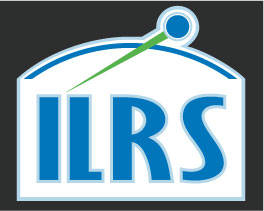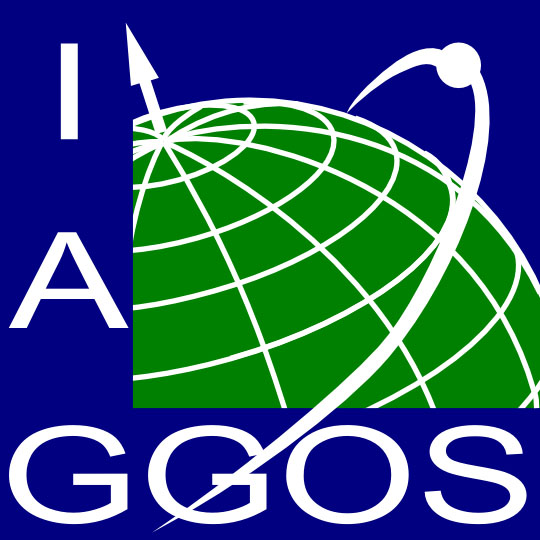
CryoSat
Jump to: Mission Support Status, Mission Support Request
ILRS Mission Support Status:
Satellite laser ranging measurements will provide an essential independent tracking data type to the DORIS data, which are the primary soure of precise orbit determination. The Cryosat Mission Support Request was approved by the ILRS Governing Board in June 2004.The CryoSat satellite was lost due to a launch failure on October 8, 2005 and thus SLR tracking of the satellite was never obtained.
Current ILRS Tracking Statistics:
| Satellite | Site Name | Station | Start Date | End Date | No. Passes | No. Points |
|---|---|---|---|---|---|---|
| CRYOSAT-2 | Arequipa | 7403 | 19-May-2010 | 09-Jun-2012 | 240 | 2,551 |
| CRYOSAT-2 | Beijing | 7249 | 02-Aug-2010 | 26-May-2012 | 48 | 548 |
| CRYOSAT-2 | Changchun | 7237 | 23-Apr-2010 | 28-May-2012 | 574 | 5,190 |
| CRYOSAT-2 | Concepcion | 7405 | 29-Jun-2010 | 05-Jun-2012 | 112 | 992 |
| CRYOSAT-2 | Grasse | 7845 | 17-May-2010 | 06-Jun-2012 | 88 | 1,727 |
| CRYOSAT-2 | Graz | 7839 | 29-Apr-2010 | 05-Jun-2012 | 613 | 11,777 |
| CRYOSAT-2 | Greenbelt | 7105 | 22-Apr-2010 | 09-Jun-2012 | 416 | 7,470 |
| CRYOSAT-2 | Haleakala | 7119 | 08-May-2010 | 10-Jun-2012 | 220 | 2,986 |
| CRYOSAT-2 | Hartebeesthoek | 7501 | 18-Aug-2010 | 07-Jun-2012 | 335 | 4,630 |
| CRYOSAT-2 | Herstmonceux | 7840 | 20-Apr-2010 | 29-May-2012 | 458 | 6,530 |
| CRYOSAT-2 | Katzively | 1893 | 24-Apr-2010 | 10-Jun-2012 | 126 | 1,361 |
| CRYOSAT-2 | Kiev | 1824 | 24-Apr-2010 | 24-Mar-2012 | 89 | 506 |
| CRYOSAT-2 | Koganei | 7308 | 21-Jul-2010 | 06-Jun-2012 | 39 | 434 |
| CRYOSAT-2 | Koganei | 7328 | 24-Nov-2010 | 12-Apr-2011 | 5 | 50 |
| CRYOSAT-2 | Matera | 7941 | 22-Apr-2010 | 09-Jun-2012 | 585 | 7,011 |
| CRYOSAT-2 | McDonald | 7080 | 05-Jun-2010 | 10-Jun-2012 | 103 | 712 |
| CRYOSAT-2 | Monument Peak | 7110 | 26-Apr-2010 | 30-May-2012 | 338 | 5,697 |
| CRYOSAT-2 | Mount Stromlo | 7825 | 22-Apr-2010 | 06-Jun-2012 | 609 | 5,886 |
| CRYOSAT-2 | Potsdam | 7841 | 26-Apr-2010 | 06-Jun-2012 | 299 | 5,102 |
| CRYOSAT-2 | Riga | 1884 | 12-May-2010 | 05-Jun-2012 | 189 | 3,182 |
| CRYOSAT-2 | Riyadh | 7832 | 03-Jul-2010 | 29-Aug-2010 | 22 | 103 |
| CRYOSAT-2 | San Fernando | 7824 | 23-Apr-2010 | 09-Jun-2012 | 243 | 2,699 |
| CRYOSAT-2 | Shanghai | 7821 | 02-May-2010 | 28-May-2012 | 131 | 1,217 |
| CRYOSAT-2 | Simeiz | 1873 | 24-Apr-2010 | 09-Jun-2012 | 105 | 1,203 |
| CRYOSAT-2 | Tahiti | 7124 | 24-Aug-2010 | 08-Mar-2012 | 55 | 873 |
| CRYOSAT-2 | Tanegashima | 7358 | 02-Sep-2010 | 12-May-2012 | 38 | 390 |
| CRYOSAT-2 | Wettzell | 8834 | 31-Jul-2010 | 10-Jun-2012 | 496 | 3,986 |
| CRYOSAT-2 | Yarragadee | 7090 | 20-Apr-2010 | 07-Jun-2012 | 1,502 | 24,494 |
| CRYOSAT-2 | Zimmerwald | 7810 | 04-Jun-2010 | 07-Jun-2012 | 896 | 13,815 |
Cryosat-2 Mission Support Request Form (January 2009, PDF):
SECTION I: Mission Information:
General Information:
Satellite Name: CryoSat-2
Satellite Host Organization: ESA
Web Address: http://www.esa.int/livingplanet/cryosat
Contact Information:
Primary Technical Contact Information:
Name: Richard Francis
Address: ESA/ESTEC, Keplerlaan 1, 2201AZ Noordwijk, The Netherlands
Phone No.: +31-71-565-4460
E-mail Address: Richard.Francis @ cryosat.esa.int
Alternate Technical Contact Information:
Name: Christoph Götz
Address: ESA/ESTEC, Keplerlaan 1, 2201AZ Noordwijk, The Netherlands
Phone No.: +31-71-565-6240
E-mail Address: Christoph.Goetz@esa.int
Primary Science Contact Information:
Name: Duncan Wingham
Address: UCL London
Phone No.: +44-20-767-97870
E-mail Address: djw@cpom.ucl.ac.uk
Alternate Science Contact Information:
Name: S. Laxon
Address: UCL London
Mission Specifics:
Scientific or Engineering Objectives of Mission: A mission to measure change in the cryosphere, CryoSat-2 will measure the thickness of sea-ice and the surface elevation of ice sheets in both Northern and Southern hemispheres. For this, it uses an advanced radar altimeter combined with Precise Orbit Determination.
Satellite Laser Ranging (SLR) Role of Mission: As the mission is intended to measure small changes in a distance measure it is necessary to use laser ranging for (1) calibration of the altimeter and (2) support to the POD. POD will be primarily done with DORIS, but SLR data are used both in the final orbits and as quality control for DORIS-only orbits.
Anticipated Launch Date: Late 2009
Expected Mission Duration: 6 months commissioning + 5 years
Orbital Accuracy Required: <5 cm and < 1 cm drift
Anticipated Orbital Parameters:
Altitude: 720 km
Inclination: 92 degrees
Eccentricity: close to 0.0
Orbital Period: 5960 s
Frequency of Orbital Maneuvers: 3-10 weeks
Mission Timeline: initial orbit acquisition during first 30 days, then regular orbit maintenance
Tracking Requirements:
Tracking Schedule:
Spatial Coverage: Global
Temporal Coverage: Full mission lifetime
Operations Requirements:
Prediction Center: ESOC
Prediction Technical Contact Information:
Name: Xavier Marc
Address: ESOC
E-mail Address: Xavier.Marc@esa.int
Priority of SLR for POD: 2nd priority
Other Sources of POD (GPS, Doppler, etc.): DORIS
Normal Point Time Span (sec): 10 s (TBC)
Tracking Network Required (Full/NASA/EUROLAS/WPLTN/Mission Specific): Full network
SECTION II: Tracking Restrictions:
Can detector(s) or other equipment on the spacecraft be damaged or confused by excessive irradiation, particularly in any one of these wavelengths (532nm, 1064nm, 846nm, or 423nm)? Obviously yes in the limiting case (e.g. GW of power). However, direct solar illumination is OK. What is the irradiation level at 720 km?
Are there times when the LRAs will not be accessible from the ground? Only under multiple failure conditions
(If so, go/nogo or segmentation files might be used to avoid ranging an LRA that is not accessible.)
Is there a need for an altitude tracking restriction? No
Is there a need for a go/no-go tracking restriction? No
Is there a need for a pass segmentation restriction? No
Is there a need for a laser power restriction? No
Other comments on tracking restrictions: We have no restrictions, but anyway we will not make such claims.
SECTION III: Retroreflector Information:
A prerequisite for accurate reduction of laser range observations is a complete set of pre-launch parameters that define the characteristics and location of the LRA on the satellite. The set of parameters should include a general description of the array, including references to any ground-tests that may have been carried out, array manufacturer and whether the array type has been used in previous satellite missions. So the following information is requested:
Retroreflector Primary Contact Information:
Name: C.R. Francis
Array type (spherical, hexagonal, planar, etc.), to include a diagram or photograph: 7 cubes arranged on a spherical surface
Array manufacturer: IPIE Moscow
Link (URL or reference) to any ground-tests that were carried out on the array: Document to be attached
The LRA design and/or type of cubes was previously used on the following missions: It's a duplicate of the array on CryoSat-1. The same basic design is on GOCE (TBC). Russian satellites (e.g. Meteor) as well.
The 3-D location (possibly time-dependent) of the satellite’s mass center relative to a satellite-based origin: A full document was produced with this information for CryoSat-1. This will be updated soon for CryoSat-2.
The 3-D location of the phase center of the LRA relative to a satellite-based origin: See above
The position and orientation of the LRA reference point (LRA mass-center or marker on LRA assembly) relative to a satellite-based origin:
The position (XYZ) of either the vertex or the center of the front face of each corner cube within the LRA assembly, with respect to the LRA reference point and including information of amount of recession of front faces of cubes: All of the information requested in this section will be provided in the updated version of the CryoSat reference information.
The orientation of each cube within the LRA assembly (three angles for each cube):
The shape and size of each corner cube, especially the height: 19.1 mm from front face to vertex
The material from which the cubes are manufactured (e.g. quartz): fused quartz
The refractive index of the cube material, as a function of wavelength λ (micron):
Dihedral angle offset(s) and manufacturing tolerance:
Radius of curvature of front surfaces of cubes, if applicable:
Flatness of cubes’ surfaces (as a fraction of wavelength):
Whether or not the cubes are coated and with what material:
Other Comments: Separate documentation is provided. The unit under test was the CryoSat-1 LRR, but the units are identical.
SECTION IV: Mission Concurrence
As an authorized representative of the CryoSat-2 mission, I hereby request and authorize the ILRS to track the satellite described in this document.
Name (print): C.R. Francis
Date: 06-Aug-2009
Position: Project Manager
For historical purposes, the Cryosat-1 Mission Support Request Form from 2004 is available in PDF form.




